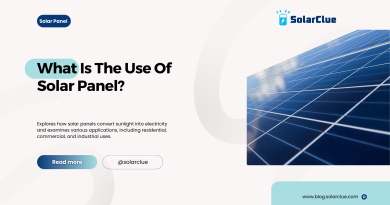Can Our Solar Panels Be Used With Other Stars
In the discourse of renewable energy sources, solar panels have invariably remained a focal point. These clean energy solutions harvest sunlight and convert it into usable electricity for residential and commercial applications. With the ongoing research to harness more power from our sun, a question has arisen that captures imaginations and stretches the boundaries of possibilities: Can our solar panels be used with other stars? In other words, is it viable to utilize light from stars, other than our Sun, to create and store energy?
Table of Contents
Solar Panels and How They Work
Before delving into the theory of harnessing energy from other stars, it’s paramount to understand the way solar panels function. They are composed of solar cells, which are essentially layers of semiconductive materials. When sunlight hits the solar panel, the energy casts electrons loose from their atoms within the cells. As these electrons flow, they generate electricity.
This photovoltaic reaction depends considerably on the quality and quantum of sunlight hitting the panel. On Earth, the distance from the Sun and atmospheric conditions strongly impact the efficiency of solar panels. In outer space, devoid of atmospheric hindrances, solar panels are decidedly more effective, as exemplified by their use in powering space stations and satellites.
Photons, Distance, and Other Stars
At its core, a star is a gargantuan nuclear reactor, emitting massive amounts of energy as light. This light is constituted by tiny packets of energy – photons. It is these photons that trigger the energy production within solar panels. However, for a solar panel to function, it necessitates a sufficient influx of photons—something easily achievable with our relatively close proximity to the Sun.
If we consider other stars, even the closest to us (Proxima Centauri) is over 4 light-years away. This astronomic distance means the starlight we receive from it is fantastically fainter than sunlight, rendering current solar panels virtually ineffective. Simply put, the immense distances cause a dispersion of photons, resulting in low photon density upon reaching a solar panel. Therefore, in their current form and technology, our solar panels would struggle to harness energy from other stars.
Theoretically Possible Yet Practically Challenging
Theoretically, the concept of using solar panels with other stars is viable. If humanity were to exponentially advance to the point of interstellar travel and colonization, it would become increasingly crucial to utilize the energy from local stars. Hypothetically, with significant technological evolution, we could produce highly sensitive solar panels capable of converting the meager light from distant stars into usable energy. A practical manifestation of this concept, though, remains firmly in the realm of science fiction.
Even if technology were to evolve to this degree, multiple challenges persist. The major practical hurdle remains the vast distances and consequently long travel times, even to the nearest stars. Moreover, a substantial infrastructure would be required for the transmission and storage of this energy. The economic and resource implications of such a project are currently far beyond our global capacity.
Conclusion
In summary, while the idea of using solar panels with other stars may animate our imaginations, it is, for now, a remote possibility. The sheer distances involved, coupled with the present limitations of our technology and resources, make it an infeasibly grand endeavor. Instead, the focus today is on optimizing our methods for harnessing the Sun’s energy, which is ample for our needs and substantially more effective with our current solar technology. However, as we venture deeper into our cosmic neighborhood and as our technologies continually evolve, the prospect of harnessing energy from other stars may transition from science fiction to reality. Whether this will ever eventuate or remain the stuff of dreams, only time will tell.




